Cove Lighting is een van de meest populaire designelementen geworden in moderne interieurs en architecturale projecten. Door de lichtbron in een verzonken kanaal te verbergen, kunnen ontwerpers een zachte, indirecte gloed creëren die plafondcontouren benadrukt, de ruimtelijke diepte verbetert en een gastvrije sfeer levert. Van alle verlichtingsopties vallen LED-striplampen op als de meest veelzijdige oplossing voor Cove-verlichting. Ze combineren flexibiliteit, efficiëntie en een lange levensduur, waardoor ze geschikt zijn voor zowel residentiële als grootschalige commerciële toepassingen.
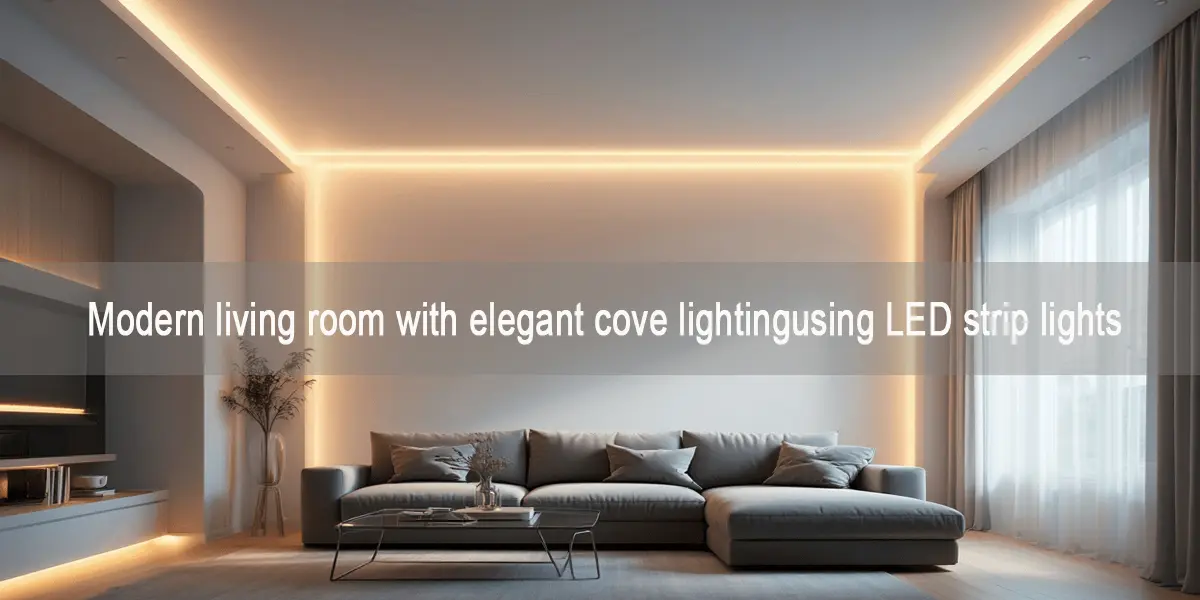
Wat is Cove-verlichting?
Cove Lighting verwijst naar een vorm van indirecte verlichting waarbij de armaturen verborgen zijn in architecturale uitsparingen, zoals plafondkoofs, wandrichels of kroonlijsten. In plaats van licht rechtstreeks in de kamer te schijnen, wordt het licht door het plafond of de muren gereflecteerd om een zacht, diffuus effect te produceren. Deze techniek wordt veel gebruikt in woonkamers, hotels, winkelruimtes en kantoren, omdat het elegantie en visueel comfort toevoegt zonder de ogen te overweldigen. Goed ontworpen koofverlichting kan een gewoon plafond omzetten in een opvallend architectonisch kenmerk.
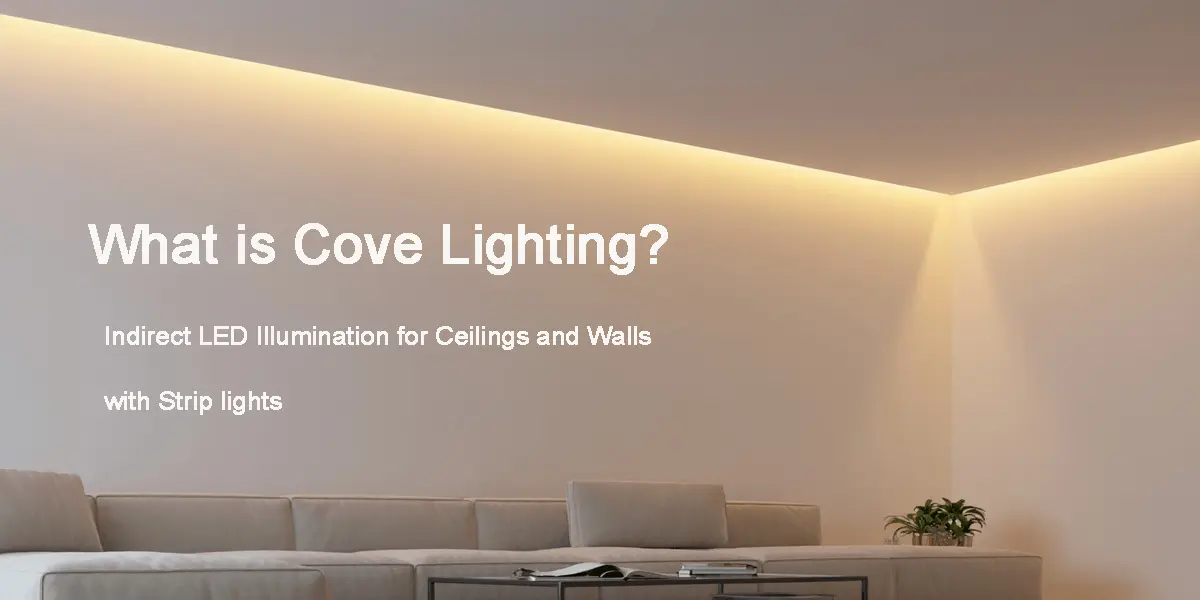
Beste plaatsen om cove-verlichting met ledstrips te installeren
Cove-verlichting kan worden geïntegreerd in vele soorten architecturale kenmerken, afhankelijk van de stijl van de ruimte en het effect dat u wilt bereiken. Populaire opties zijn onder meer valse plafonds, ladeplafonds, kroonlijsten, verzonken wandrichels, I-balken en valenties. In elk geval blijft de lichtbron verborgen, terwijl de gereflecteerde gloed zachtjes het plafond of de muuroppervlakken opfleurt. Dit creëert zowel functionele verlichting als een subtiel decoratief accent dat de algehele sfeer verheft.
Een van de grootste voordelen van LED-striplampen is hun installatieflexibiliteit. Ze kunnen op precieze lengtes worden gesneden om aan uw afmetingen te voldoen en gemakkelijk te monteren met 3M zelfklevende achterkant of aluminium profielen. Dit maakt ze zelfs geschikt voor smalle ruimtes, gebogen baaien of complexe lay-outs waar traditionele armaturen niet kunnen passen.
Als u nieuw bent bij Cove Lighting, is een eenvoudige manier om uw installatie te plannen, door te kijken naar de vier meest voorkomende soorten Cove-lay-outs: directe, indirecte, verticale en zwevende ontwerpen. Elk heeft zijn eigen visuele effect, en het kiezen van de juiste hangt af van of je een zachte gloed voor sfeer, een helderdere wassing voor functioneel licht of een opvallend architectonisch hoogtepunt wilt.
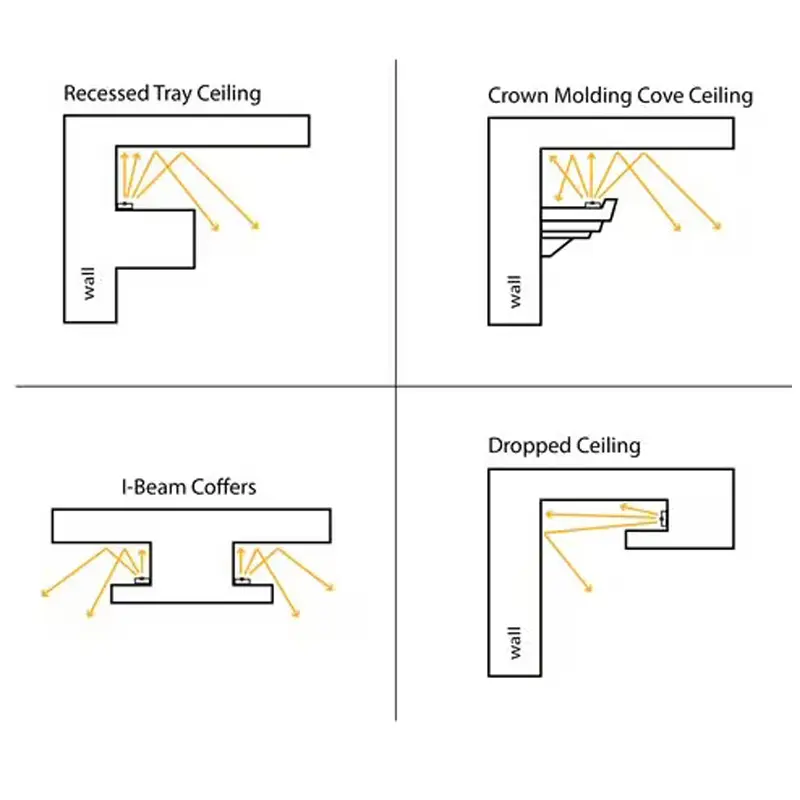
Tip: Als u een diagram van de vier belangrijkste soorten Cove-verlichting opneemt, kunt u zich voorstellen waar de strips het meest effectief moeten worden geplaatst.
Waarom kiezen voor LED-strips voor Cove-verlichting?
LED-stripverlichting zijn de standaardoplossing geworden voor moderne Cove-verlichtingsprojecten. Vergeleken met traditionele fluorescerende buizen of touwlampen, bieden ze een hogere efficiëntie, een langere levensduur en ongeëvenaarde flexibiliteit. Door hun slanke ontwerp zijn ze gemakkelijk te verbergen, terwijl de installatie eenvoudig is met zelfklevende achterkant of aluminium profielen. Met een nominale levensduur van maximaal 50.000 uur minimaliseren ze ook de vervangings- en onderhoudskosten, wat vooral waardevol is voor grootschalige commerciële toepassingen.
Ontwerp en esthetiek
Naadloze verlichting: LED-strips creëren doorlopende lichtlijnen verborgen in baaien, waardoor een zachte gloed wordt verkregen die harde schittering vermijdt.
Architectonische hoogtepunten: Indirecte verlichting verbetert plafonds, muren en lijsten, waardoor ruimtes een verfijnd, gelaagd uiterlijk krijgen.
Maatwerk en controle
Geschikt voor fit-to-fit: stroken kunnen worden bijgesneden of verlengd om de exacte afmetingen te evenaren, zelfs langs bochten en hoeken.
Verstelbare sfeer: met dimbare opties kunnen lichtniveaus verschuiven van heldere functionele verlichting naar een warme, ontspannende sfeer.
Kleurvariatie: van warme en koele witte tinten tot RGB, RGBW of DMX-gestuurd Adresseerbare LED's, er zijn oplossingen voor zowel subtiele sfeer als dynamische effecten. Samen maken deze functies LED-strips een ideale keuze voor zowel residentiële interieurs die prioriteit geven aan comfort en gastvrijheid, als voor grote commerciële omgevingen waar nauwkeurige controle en energiebesparing essentieel zijn.
Cove Lighting Design Tips en LED Strip Selectiegids
Bij het plannen van cove-verlichting met LED-strips, hangt succes af van meer dan alleen het kiezen van een lichtbron. De juiste ontwerpbeslissingen zorgen voor consistente prestaties en de gewenste sfeer voor elke ruimte. Hieronder staan de belangrijkste factoren om te overwegen, in combinatie met praktische productaanbevelingen.
Kies de juiste kleurtemperatuur
Woon- en gastvrijheid: Warm White (2700K-3000K) creëert een gezellige, uitnodigende sfeer voor woonkamers, slaapkamers en hotelsuites.
Kantoren en commerciële ruimtes: Neutral White (3500K-4000K) ondersteunt concentratie en productiviteit en behoudt tegelijkertijd een professionele uitstraling. (Voor een gedetailleerde vergelijking, zie onze gids over 3000K versus 4000K LED-strips.)
Dynamische omgevingen: Tunable White- of RGB/RGBW-strips bieden flexibiliteit voor ruimtes zoals restaurants, winkels en evenementenlocaties.
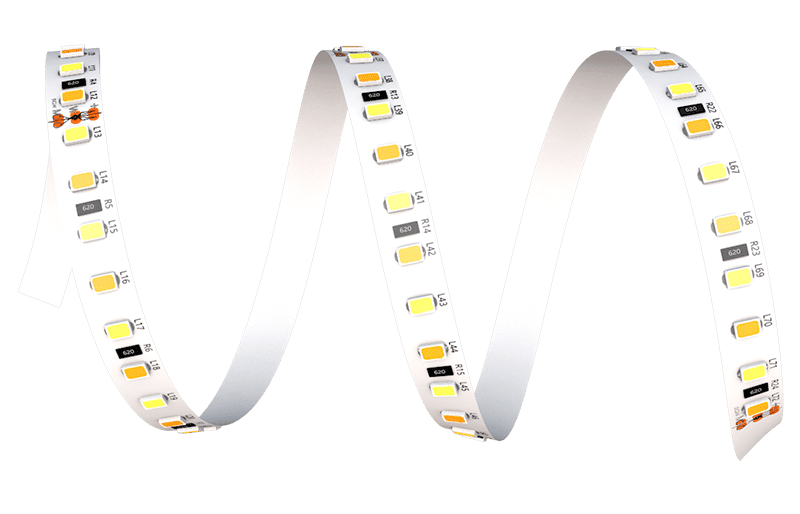
CCT Tunable kleur veranderende LED Strip
Product: SMD2835-120LED-8MM-CCT
LED AANTAL: 120LEDs/m
Vermogen: 9,6 W/m, 19,2 W/m
Spanning: DC24V
220lm/W hoog rendement SMD2835 LED's
Dubbelzijdig met koper bekleed laminaat
Enkele bak in één kleur, 3 stappen SDCM beschikbaar
CCT instelbaar van 2700K tot 6500K
Zorg voor helderheid en uniformiteit
Voor een gelijkmatige lichtverdeling zonder zichtbare hotspots, overweeg LED-strips met hoge dichtheid of COB (chip-on-board) strips.
Combineer ze met aluminium profielen en diffusers om het thermisch beheer te verbeteren en een soepele, continue gloed te bereiken.
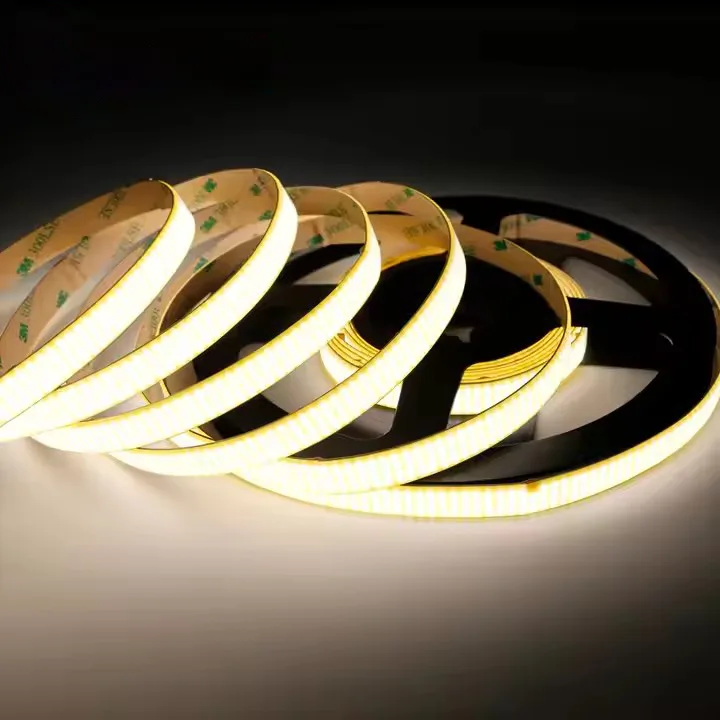
12mm Breedte Ultra Bright Dotless COB LED Strip Light
Model: FYX12T1280C
LED Chip QTY per meter: 1280chips
CRI: >90
PCB-breedte: 12 mm
Kleurtemperatuur: 3000K/4000K/6000K
Ingangsspanning: DC24V
Vermogen per meter: 15W
Snijdbare lengte: 12,5 mm
Waterdichte versie: IP20/IP65
Garantie: 3 jaar
Match spanning met projectschaal
24V-systemen zijn zeer geschikt voor korte tot middelgrote runs (≤10 m) en gedetailleerde installaties met frequente snijpunten.
48V-systemen maken langere continue runs mogelijk met verminderde spanningsval, ideaal voor grote baaien in lobby's, winkelcentra of kantoren.

Constante Huidige Lange Looppas LEIDEN Strooklicht
Hoofdmodel: FQX10T120D
Meter per roloptie: 10m/20m/30m/50m
PCB Breedte Optie: 10mm/12mm
Kleuroptie: 2700K/3000K/4000K/5000K/6500K
CRI-optie: 80/90
Ingangsspanning: DC24V/DC36V/DC48V
Vermogen per meter: 4,2W/7,2W/8,5W/12W
IP-klasse optie: IP20/IP54/IP65/IP67/IP68
Garantie: 5 jaar
Plan voor controleopties
Eenvoudig dimmen (0-10V of TRIAC) werkt goed in huizen en kleine bedrijven.
Geavanceerde besturingssystemen (DALI, DMX512 of smart app-gebaseerde controllers) worden aanbevolen voor projecten die scène-instelling, dynamische effecten of integratie met gebouwbeheersystemen vereisen.
Essentiële accessoires voor Cove-verlichtingsprojecten
Essentiële accessoires voor Cove-verlichtingsprojecten
Terwijl LED-strips de basis vormen van Cove Lighting, zorgen de juiste accessoires voor een langetermijnbetrouwbaarheid en professionele resultaten. Een goed ontworpen project vereist meestal vier belangrijke categorieën componenten:
Aluminium profielen
Meer dan alleen een woning, aluminium kanalen Verbeter de warmteafvoer en verleng de levensduur van LED-strips. In combinatie met mattende diffusers elimineren ze hotspots en leveren ze glad, uniform licht over plafonds en muren. (zie onze gedetailleerde gids over Beste aluminium profielen voor LED-stripverlichting voor meer aanbevelingen.)
LED-stuurprogramma'
stabiel stroomvoorziening is essentieel. Kies voor constante spanningsstuurprogramma's (24V of 48V) met dimopties zoals 0-10V, DALI of DMX512, afhankelijk van het niveau van de controle die uw project nodig heeft.
Verlichtingscontrollers
Van eenvoudige wanddimmers tot geavanceerde wifi-, Bluetooth- of DMX-systemen, regelaars Hiermee kunt u de helderheid, kleur en dynamische lichtscènes maken - een belangrijke factor voor commerciële of horecaruimtes.
Montageklemmen en connectoren
passend Montage accessoires Houd de strips veilig op hun plaats en houd strakke lijnen, vooral rond hoeken of complexe lay-outs. Kwaliteitsconnectoren verminderen ook de spanningsval en zorgen voor betrouwbare prestaties.
Door deze accessoires zorgvuldig te selecteren en te integreren, kunnen ontwerpers en installateurs een eenvoudige LED-strip transformeren in een professionele Cove-verlichtingssysteem - een die visueel comfort, energie-efficiëntie en stabiliteit op lange termijn combineert.
Toepassingsscenario's voor Cove Lighting
Woonruimtes
In huizen wordt cove-verlichting vaak gebruikt in woonkamers, slaapkamers en keukens om een warme en uitnodigende sfeer te creëren. Het kan architectonische details zoals dienbladplafonds of verzonken baaien benadrukken, terwijl het een zachte, indirecte glans biedt die het comfort en de ontspanning verbetert. Dit type verlichting kan ook worden gebruikt om planken, nissen of doorgangen subtiel te verlichten, waardoor diepte en visuele interesse toevoegt aan binnenruimtes.
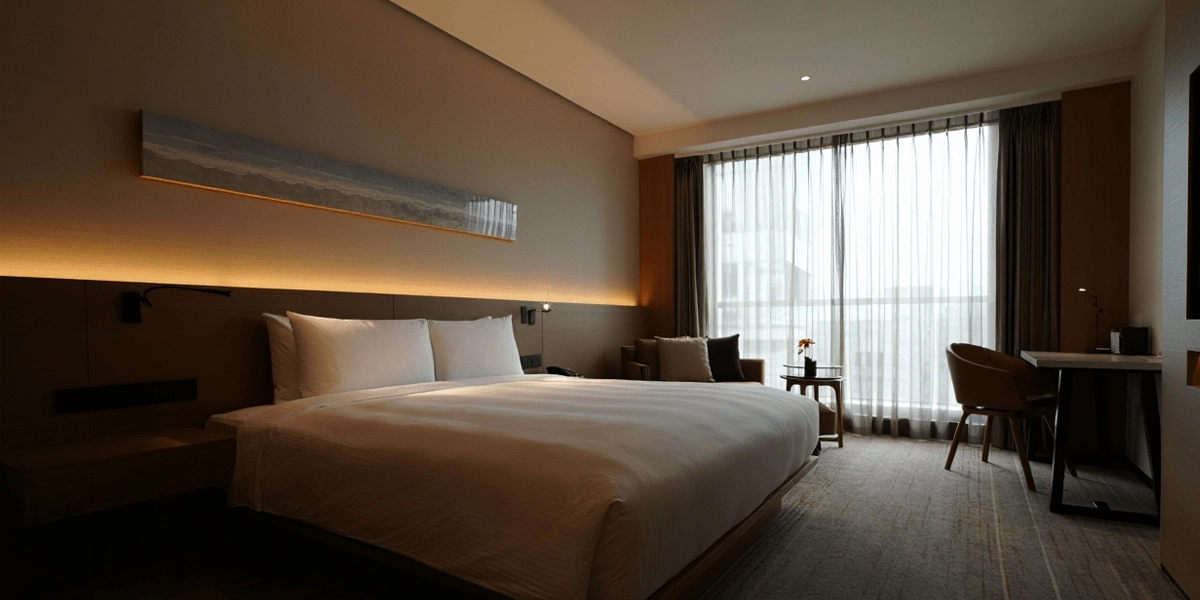
Kantoren & vergaderzalen
In kantoren en vergaderruimtes creëert Cove Lighting een rustige, uitgebalanceerde omgeving die verblinding en vermoeidheid van de ogen vermindert. Indirecte verlichting langs plafonds of muren helpt schaduwen te verzachten en voegt een gevoel van openheid toe. Goed ontworpen koofverlichting kan een aanvulling zijn op primaire bovenlichten, waardoor het visuele comfort wordt verbeterd en de algehele esthetiek van de werkruimte wordt verbeterd.
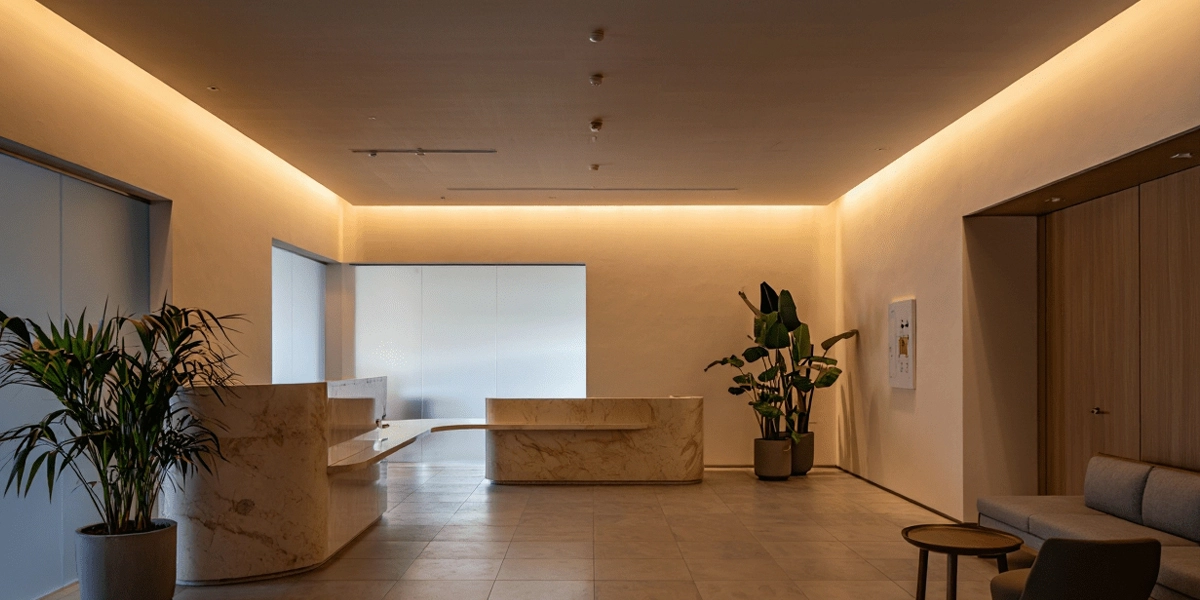
Detailhandel & showrooms
Cove-verlichting in winkels en showrooms kan de aandacht van de klant leiden en de visuele impact van displays vergroten. Door de muren, plafonds of displaygebieden zacht te verlichten, creëert het een gelaagde en uitnodigende omgeving. Dynamische Cove-verlichting kan ook worden gebruikt om de sfeer van een ruimte te veranderen tijdens promoties, evenementen of seizoensthema's, waardoor de winkelervaring aantrekkelijker wordt.
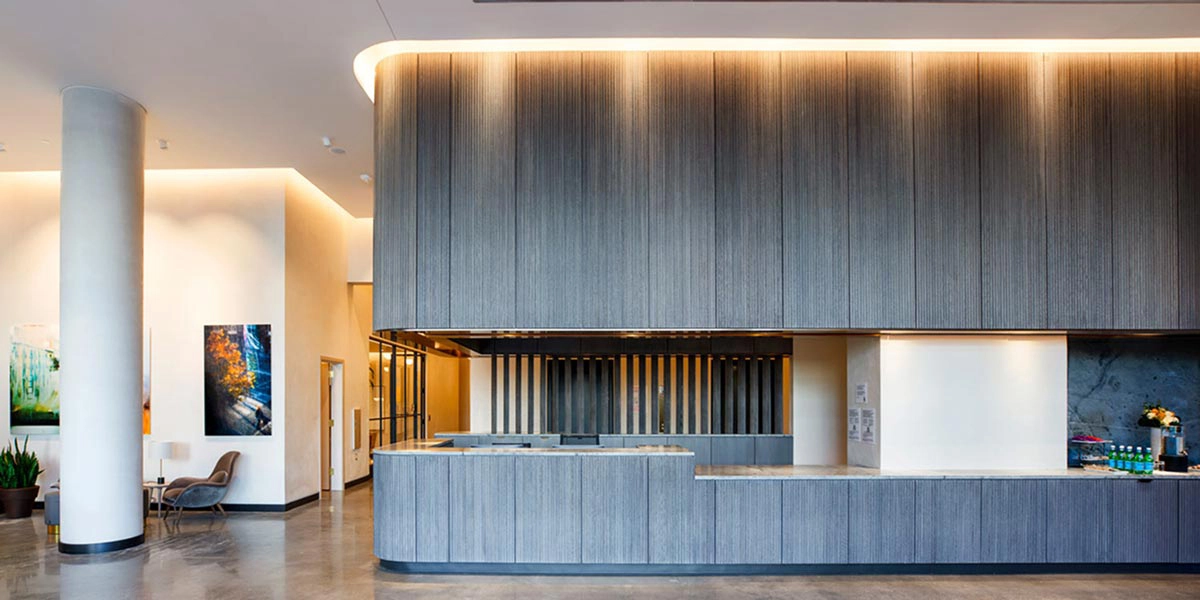
Hotels & restaurants
In hotels en restaurants draagt Cove Lighting bij aan een gevoel van luxe en verfijning. Het kan het architecturale karakter van lobby's, eetgedeeltes en gastenkamers verbeteren en tegelijkertijd subtiele overgangen tussen ruimtes creëren. Door de intensiteit en gelaagdheid van licht aan te passen, kunnen ontwerpers gastvrije, intieme of dramatische stemmingen creëren die het algehele interieurontwerp en de gastervaring aanvullen.
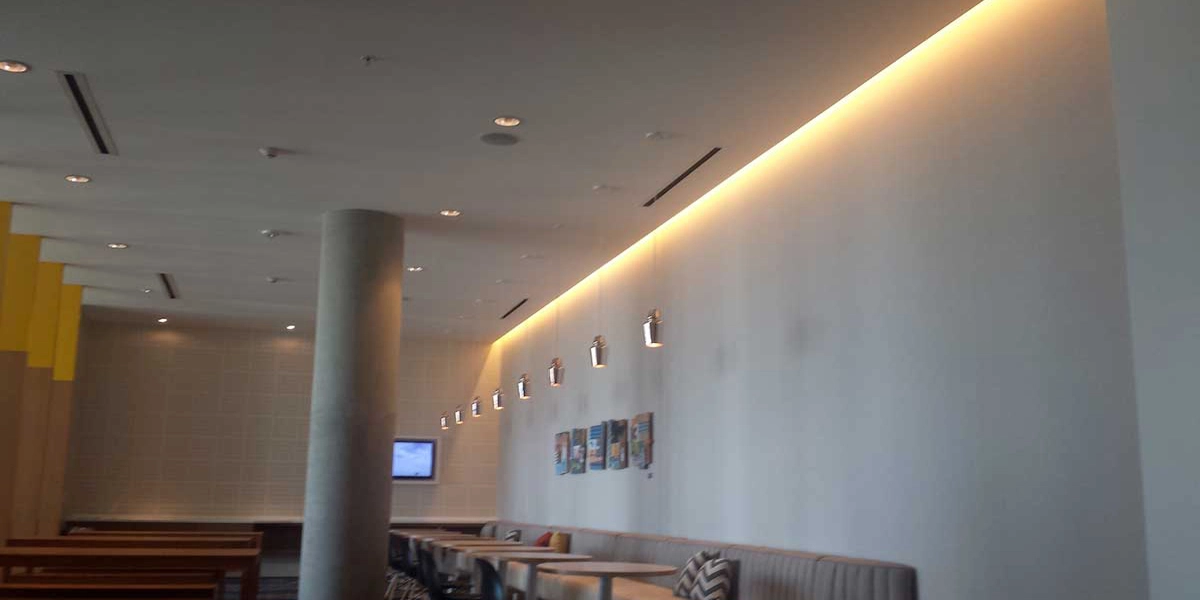
FAQ
Aluminium profielen worden aanbevolen voor de meeste installaties. Ze helpen bij warmteafvoer, beschermen de LED-strips en zorgen voor een schone, professionele afwerking. In sommige gevallen kunnen strips met kleefstof direct worden gebruikt als de warmte- en montageomstandigheden dit toelaten.
Meet de lengte van uw inham en kies stroken die passen of kunnen worden gesneden. Zorg voor een goede spanning en stroom voor een consistente helderheid.
Veel LED-strips zijn compatibel met dimmers of slimme bedieningselementen, zodat u de helderheid kunt aanpassen om de gewenste sfeer te creëren.
LED-strips kunnen worden bevestigd met zelfklevende achterkant of in kanalen worden gemonteerd. De volgende productinstructies zorgen voor een soepele en veilige installatie.
Conclusie
Cove Lighting is een krachtig ontwerptool dat elke ruimte kan transformeren, van gezellige huizen tot dynamische commerciële omgevingen. De juiste combinatie van LED-strips, installatietechnieken en doordacht ontwerp zorgt niet alleen voor een visueel opvallend resultaat, maar ook op lange termijn betrouwbaarheid en energie-efficiëntie. Door de lay-out zorgvuldig te plannen, geschikte producten te selecteren en te overwegen hoe licht omgaat met architectuur, kunnen ontwerpers en installateurs Cove-verlichting creëren die de sfeer verbetert, de kenmerken benadrukt en de algehele ervaring van de ruimte verbetert.

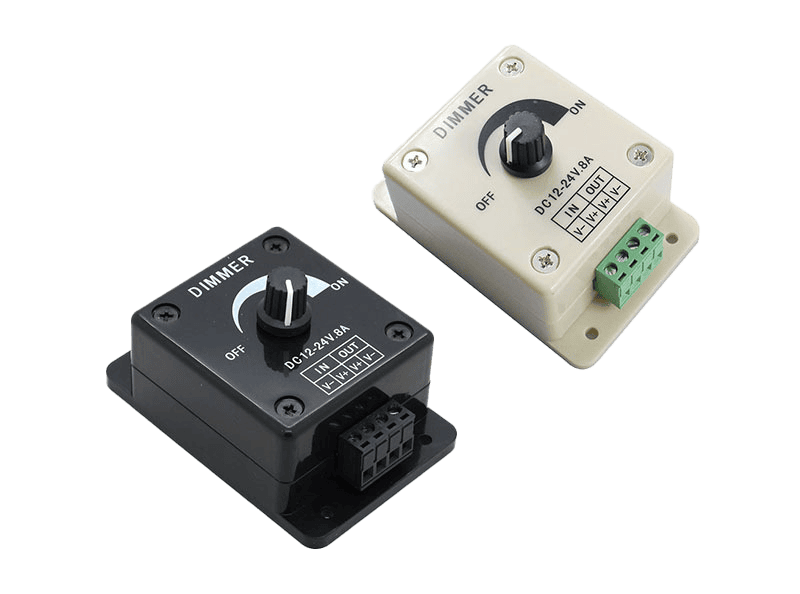
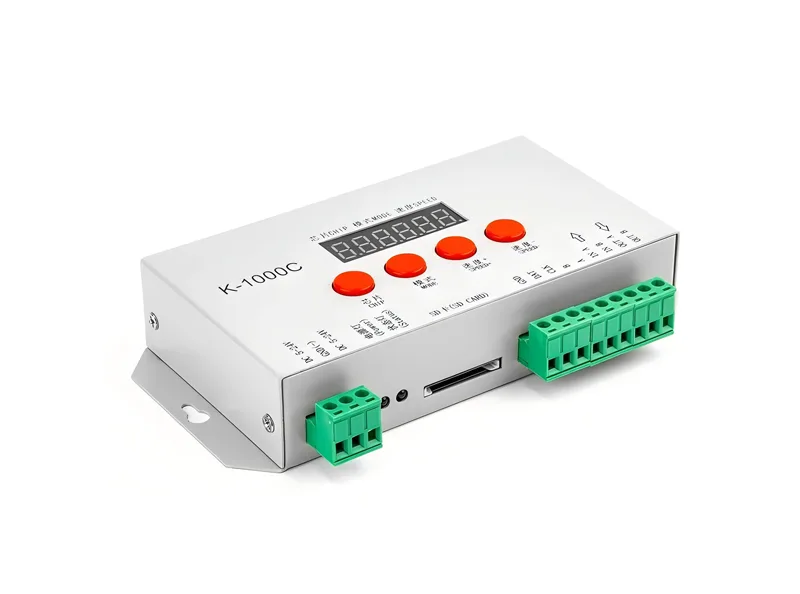
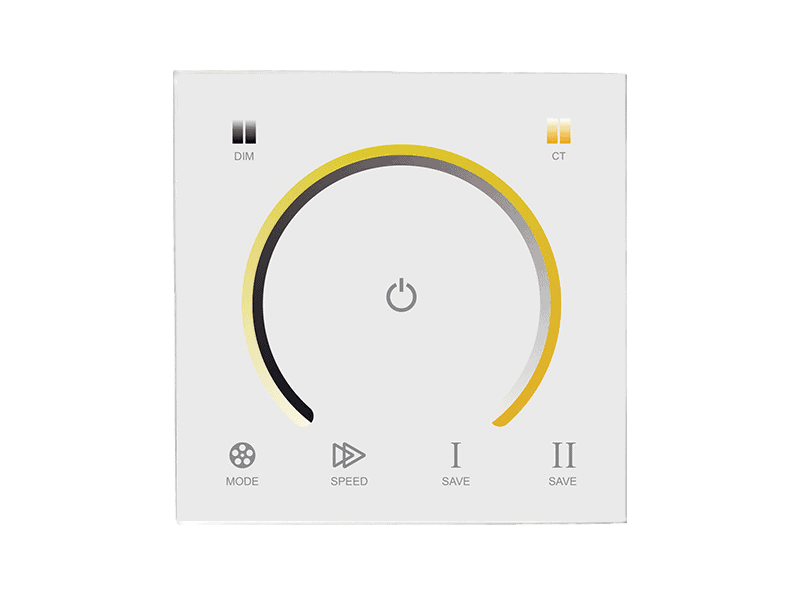
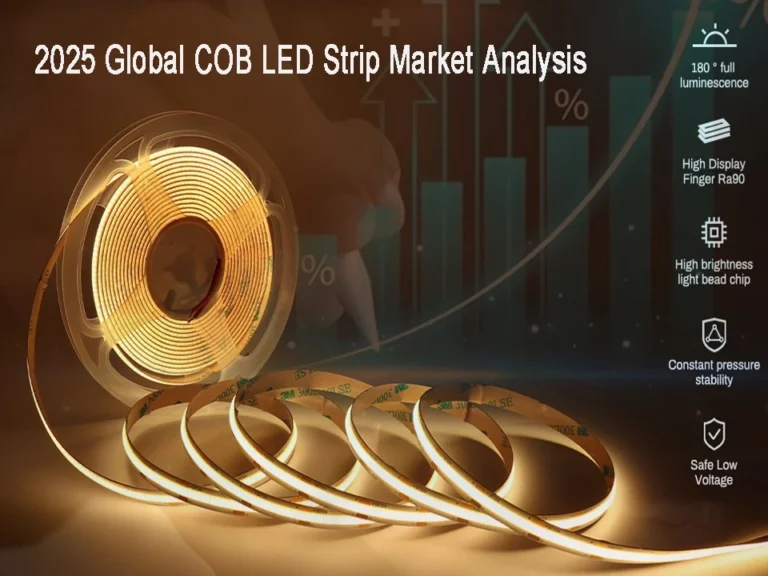
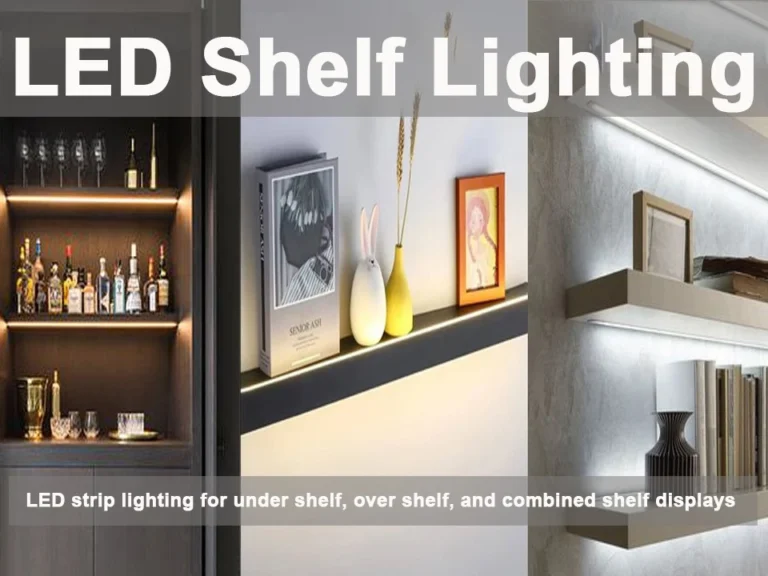
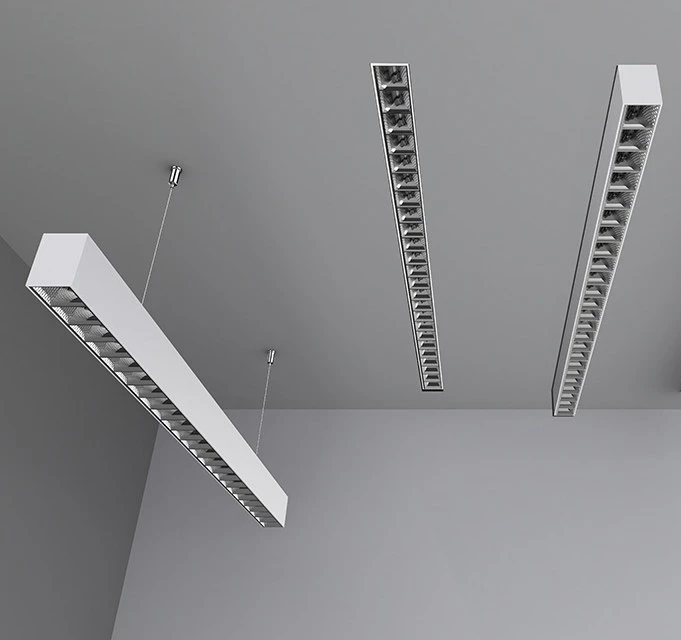

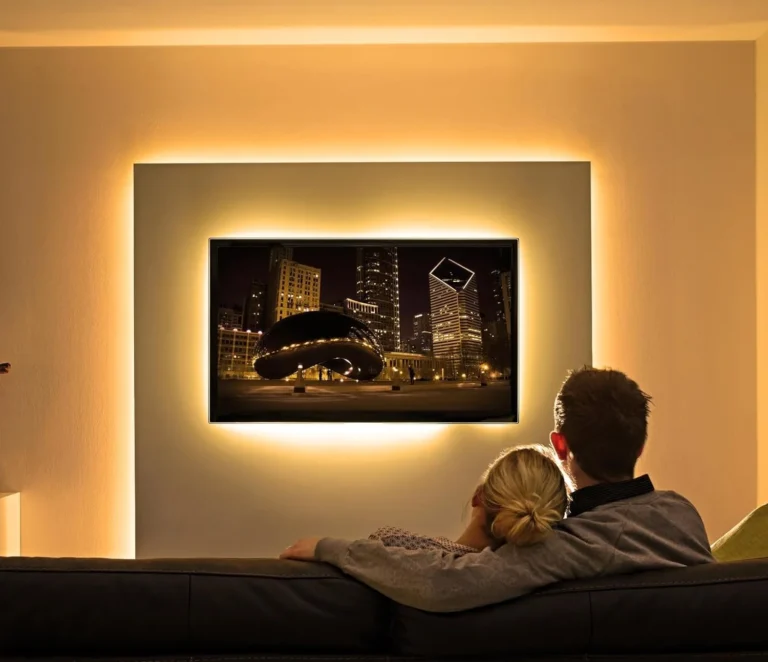
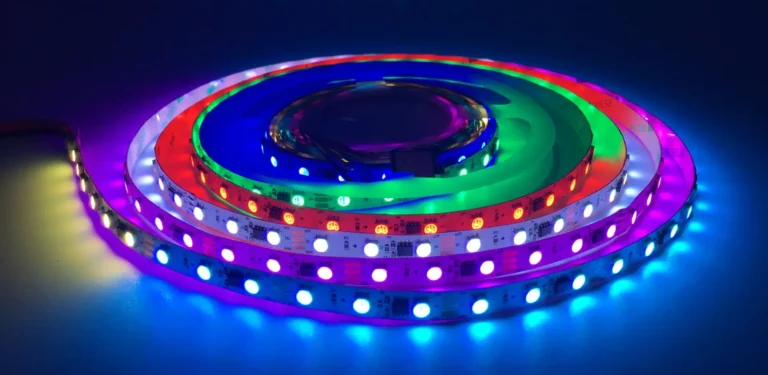

Je bent echt een precies juiste webmaster De laadsnelheid van de site is ongelooflijk, het voelt een beetje dat je een onderscheidende truc doet. Bovendien is de inhoud meesterwerk Je hebt een geweldige activiteit in deze kwestie gedaan